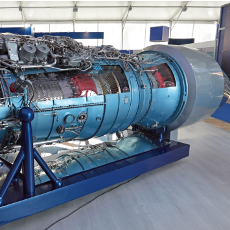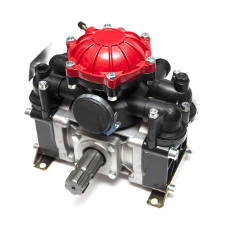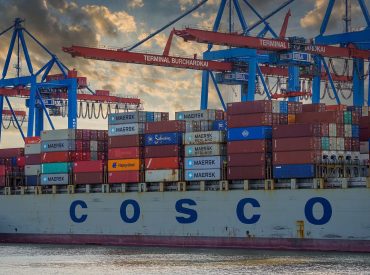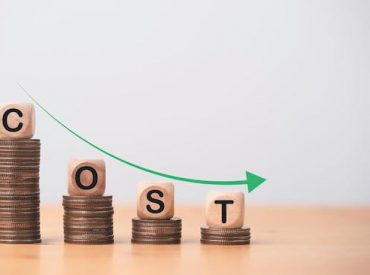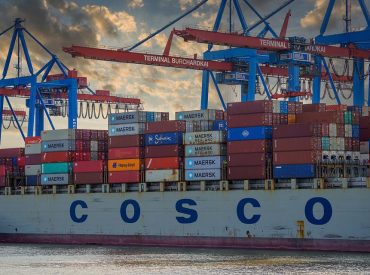We take immense pride in unveiling our latest masterpiece – our digital brochure. Packed with insights, expertise, and solutions that can transform your business, it’s a must-have resource for industry leaders and enthusiasts alike. Ready to explore a world of possibilities? Don’t miss out. Download our brochure today and embark on a journey of excellence with Refteck.
Indirect Procurement – Time to Modernise and Digitise to Generate Value
Imagine saving your company millions of dollars without having to modify your products or services significantly. Indirect procurement offers that kind of potential.
Often being disregarded or not a vital part of a company's procedures, indirect spending can make up a sizable amount of your company's overall budget.
Businesses can save a lot of money and boost their bottom line by recognising the hidden benefits of indirect procurement. The indirect procurement process can have influential effects on a company's spending management and overall income, depending on the size and complexity of the organisation's acquisitions.
Let's learn more about it in detail.
Meaning of Indirect Procurement
In simple words, purchasing goods and services that are not directly related to the company's final product is known as indirect procurement. These expenditures, which typically include office supplies, IT equipment, and professional services like consulting or law, are made to support the company's operations as well as those of your business divisions.
Occasionally, indirect procurement is managed separately from direct procurement, which focuses on procuring commodities and services directly related to the company's primary activities. Indirect procurement can be a vital tool for businesses looking to control costs and boost productivity.
Some examples of indirect spend procurement include:
- Office supplies
- Marketing-related services
- Capital expenditure
- Travel management services
- Power, gas and water supplies
- Facilities, maintenance and repair
- HR-related services such as hiring and training
Difference Between Direct and Indirect Procurement
Two crucial steps in the procurement process of an organisation are direct and indirect procurement. The products and services they involve and how they affect the production process make them different.
| Aspect | Direct Procurement | Indirect Procurement |
|---|---|---|
| Definition | It involves buying products and services that are directly relevant to the manufacturing process. This includes raw materials, components or machinery. | It involves buying products and services that are not directly used in the production process. Office supplies, repair and maintenance work, all fall under this category. |
| Importance | It is essential to the company’s basic operations. It also directly affects the end product’s effectiveness and quality. | It supports the company's daily operations but has no direct impact on the production process. |
| Relationship with suppliers | It usually entails long-term relationships with fewer suppliers because consistency and quality are crucial. | It involves more vendors, and because of the range of products and services required, changes may occur more often. |
| Cost focus | It ensures that the materials and components are priced competitively by placing a strong emphasis on cost control and optimisation. | It focuses on cost-efficiency but takes a broader approach to do so, taking into account things like supplier dependability, service quality, and convenience. |
| Risk management | It entails strict quality control procedures to reduce the possibility of inferior materials having an impact on the production process. | It minimises delays to operations while maintaining service levels and making sure deliveries arrive on time. |
| Examples | Steel, electronic components, machinery, raw materials. | Office supplies, software licenses, marketing and cleaning services |
Direct procurement is crucial for the production process, whilst indirect procurement helps the organisation in its overall functioning. For a company to run smoothly, it is essential to strike a balance between these two types of procurement.
How do Indirect Procurement Processes Lead to Saving Your Money?
Here are some indirect procurement best practices that can help you save your money:
- Reducing waste spending: Identifying and fixing instances of unauthorised or untracked spending, as well as making sure that all expenditures are accurately accounted for, are all made possible by the establishment of formalised systems.
- Consolidating procurement: By combining purchases of similar goods or services, businesses can more easily keep track of their finances and gain leverage when negotiating volume discounts with suppliers.
- Enhancing the supplier pool: You won't always have good experience with your vendors. Strong supplier relationship management helps exclude less trustworthy suppliers and provide a constant customer experience.
- Putting automation to use: Many of the manual components of procurement are being replaced by software solutions, which lowers human error. By gathering data, it is easier to identify opportunities for savings and to make secure decisions in this situation.
Indirect Spend Management
Indirect Procurement Management requires an organised approach to supplier relationship management, contracting and sourcing. It necessitates a thorough comprehension of the particular requirements of the company and each of its sections.
Let's have a look at it in a more precise way.
Strategies for Indirect Procurement
A well-defined indirect procurement strategy is essential for increasing value and limiting expenses. The strategy should incorporate:
- Supplier relationship management: Building excellent ties with suppliers can result in better pricing, higher service standards, and innovative ideas.
- Category management: Sorting purchases according to their characteristics and needs enables wise strategic sourcing choices
- Cost optimisation: It is the process of continually assessing costs and seeking out ways to cut costs without sacrificing quality.
- Promoting wise spending: Employers should be made aware of the procurement policy and processes, a system should be put in place to ensure compliance, and expenditures should be tracked and reported on to promote responsible spending.
What is the Process of Indirect Procurement?
- Identify stakeholders: Start by identifying internal stakeholders within your organisation, such as department heads, budget holders and end users who depend on indirect products and services. Creating a sourcing strategy that is in line with the goals of the organisation requires a thorough understanding of their needs and expectations.
- Assessing spending: Once you have identified the stakeholders, the next step is to analyse the organisation's current spending in great detail. This calls for classifying purchases, locating key suppliers, and measuring spending. This research forms the basis for identifying areas where cost-saving strategies, including combining purchasing or negotiating better pricing, can be put into place.
- Develop a comprehensive sourcing plan: Create a thorough sourcing plan based on the budget analysis. This plan should take into account things like the organisation's financial constraints, risk tolerance, and the accessibility of reliable suppliers. The procurement procedure, including the stages for choosing a supplier, negotiating a contract, and maintaining relationships, should also be described.
- Choose suppliers: Once you have a clear sourcing strategy in place, you can start vetting prospective vendors. This assessment should take into account a number of factors, including pricing competition, product and service quality, on-time delivery, and overall supplier customer service. Consider the supplier's financial security and capacity to fulfil the organisation's long-term needs.
- Contract negotiations: Discuss contract terms with a few chosen providers. This entails working together with the supplier to develop conditions that are advantageous to both parties, such as pricing schemes, delivery timetables and service-level agreements. Striking a balance between ensuring the supplier is driven to deliver high-quality goods and services and providing the organisation with the highest return on its investments is the objective.
- Manage ongoing relationships: Long-term success depends on developing and preserving solid relationships with suppliers. So, you must maintain a constant eye on the performance of your suppliers, deal with any problems as they arise, and look for ways to streamline your operations. Maintaining open lines of communication with suppliers makes sure that everyone is happy and committed to the partnership's objectives.
Global Indirect Procurement
Managing indirect procurement on a global scale presents a unique set of challenges for multinational firms. It necessitates a coordinated strategy across several geographic areas that takes into account regional differences in laws, customs, and currency.
However, global indirect procurement can be challenging due to the complexity of the network of suppliers and contracts that must be managed across numerous nations, and global indirect procurement can be complex. However, it also presents a chance for companies to save costs and boost productivity by utilising international markets and economies of scale.
The Bottom Line
In conclusion, efficient management of indirect procurement is essential in the fast-paced corporate world of today. Organisations may unlock considerable value by putting in place a strategic approach that takes cost-effectiveness, quality, and stakeholder satisfaction into account.
Businesses can streamline their procurement procedures through careful supplier selection, contract negotiation, and continuing relationship management. In addition to cost savings, this guarantees a consistent supply of high-quality goods and services.
An organised and cooperative approach to indirect procurement is a crucial component of an organisation's success in the contemporary marketplace.






























